- Market Overview
- Futures
- Options
- Charts
- Custom Charts
- Spread Charts
- Market Heat Maps
- Historical Data
- Stocks
- Real-Time Markets
- Trading Calendar
- Futures 101
- Commodity Symbols
- Real-Time Quotes
- CME Hedging Resource Center
- Farmer's Almanac
- USDA Reports
Left for Dead, Grain Market Bulls Now Have a Pulse

Grain futures markets bulls started last week’s trading on life-support, but were firmly resuscitated as the week progressed, led by corn. December corn (ZCZ25), November soybeans (ZSX25), December SRW wheat (ZWZ25) and December HRW wheat futures (KEZ25) markets all posted technically bullish weekly high closes Friday. These are chart clues that those markets have put in at least near-term price bottoms and are likely to see follow-through buying from the speculators this week.
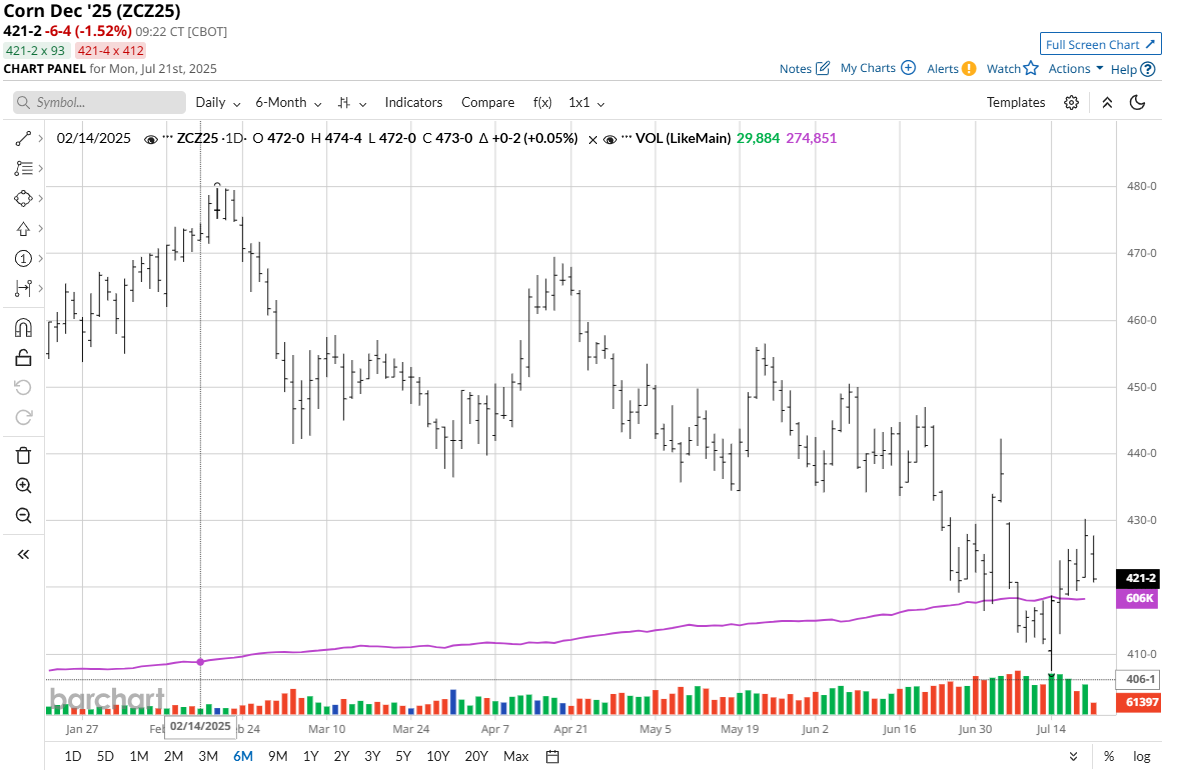
Corn Will Likely Lead any Sustained Grain Market Rallies
While Corn Belt weather has been fully price-bearish for the corn market lately, that pattern may be changing. Weather forecasters are now saying somewhat drier conditions and hotter temperatures are likely to hit the Midwest, especially the central and southern regions, in the next couple weeks. Temperatures may reach 100 degrees on some days.
While most of the U.S. corn crop is making it through the important pollination stage of growth in good shape, there are reports of some corn-pollination issues in areas of the Corn Belt. While the extent of these issues is unknown at present, the next few weeks will likely provide a better picture of any developing corn crop problems. The corn market bears last week appear to have been given pause, following nearly optimal growing conditions over the past several weeks.
On the demand side, U.S. trade deals, along with export demand for U.S. corn, will be front-burner topics that come more into play in price action once a better handle is achieved on the size of the U.S. corn crop. Corn market bulls were disappointed with last week’s USDA weekly export sales tally, following recent better global demand for U.S. corn.
U.S. Soybean Crop Sees Critical Phase of Plant Growth Just Ahead
November soybean futures on Friday saw a third straight session of price gains. So did September soybean meal futures (ZMU25), which also scored a technically bullish weekly high close on Friday, after hitting a contract low earlier last week. Soybean meal futures will very likely have to drive any price advances in the soybean complex for lasting price uptrends to occur, as soybean meal has been the sickliest market in the complex over the past several weeks.
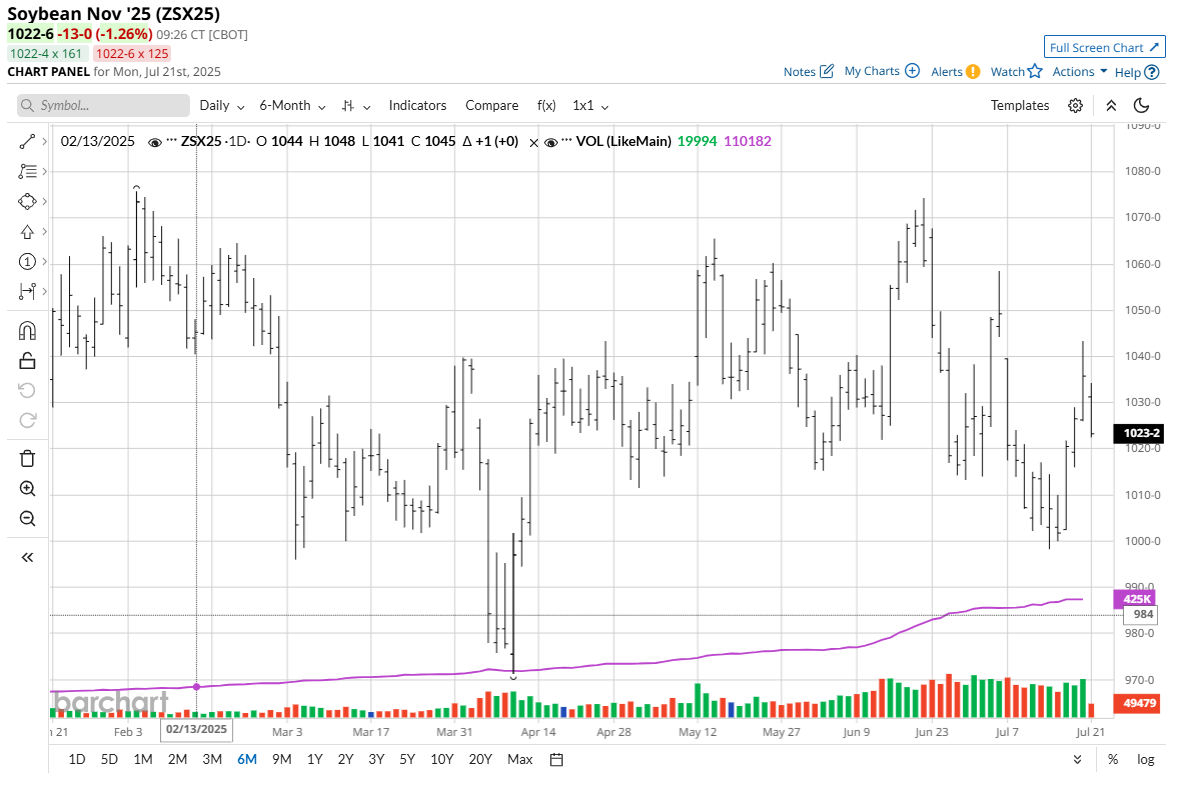
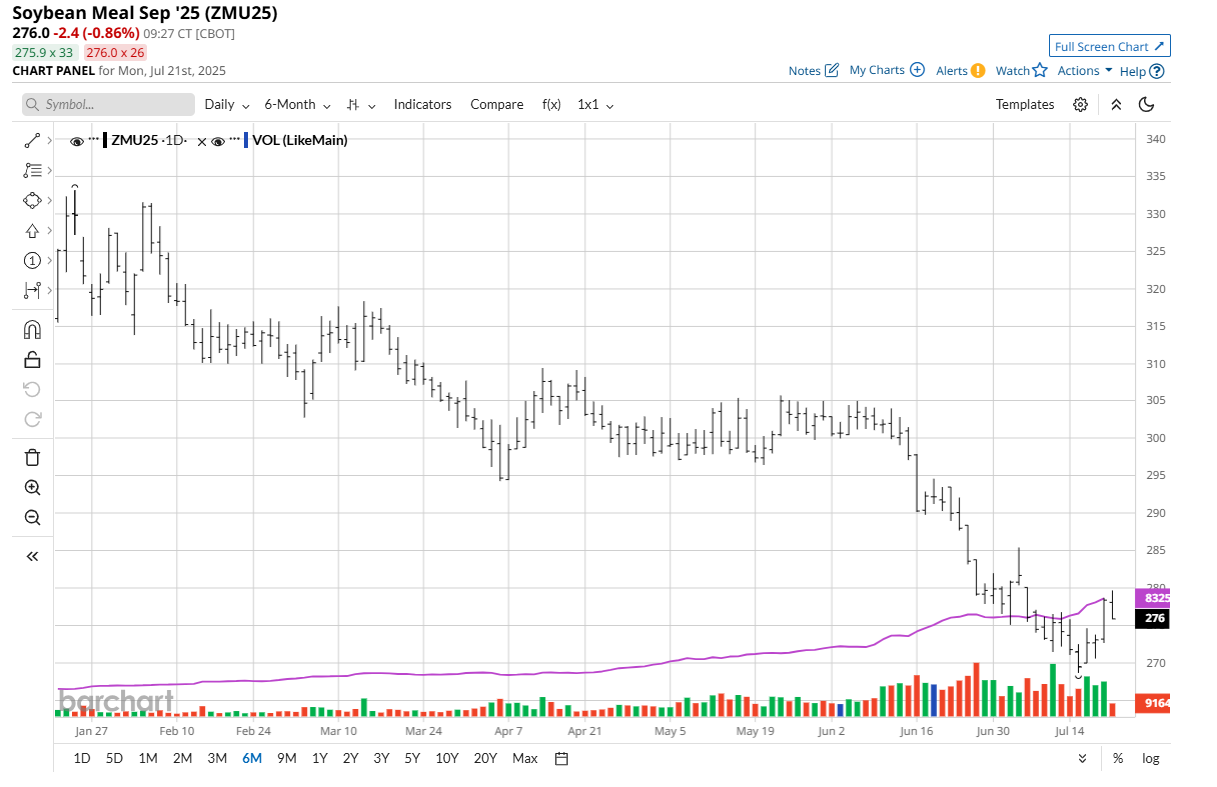
Weather conditions in the U.S. Midwest from now through August and into early September will be extra important for the soybean crop. With the Midwest heating up next week, soybean traders will be paying extra close attention to extended weather forecasts, to see if the hotter and drier weather pattern sticks around the region. Many more years than not, some degree of a weather-market scare develops in the corn and soybean futures markets in the summertime. Since there were no significant weather-market rallies in corn and beans last year, a weather scare is overdue.
U.S. export demand for soybeans will have to improve in the coming weeks and months for price uptrends in the soybean complex to be sustained. New U.S. trade deals will likely play a large role in any better global demand for U.S. soybeans and meal. Better U.S. trade relations with China will be extra important for the soybean market.
Winter Wheat Futures Bounce Off Solid Chart Support Levels
Soft red winter and hard red winter wheat futures markets last week saw their near-term price downtrends at least temporarily halted as prices rebounded from strong technical support levels. Those technical support levels holding, as well as the bullish weekly high closes on Friday, suggest wheat futures have put in at least near-term price bottoms. However, wheat market bulls will need help from rallies in corn and soybean markets for the wheat price to continue rebounding and turn into an uptrend.
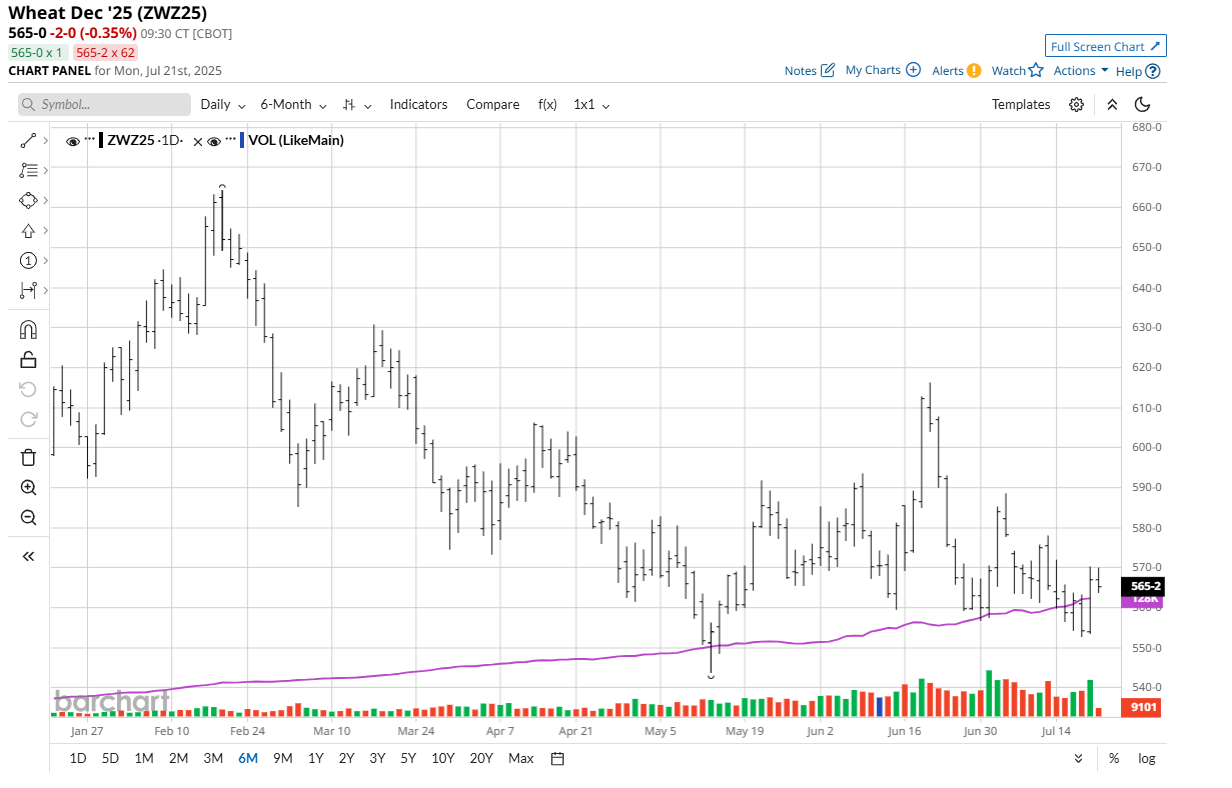
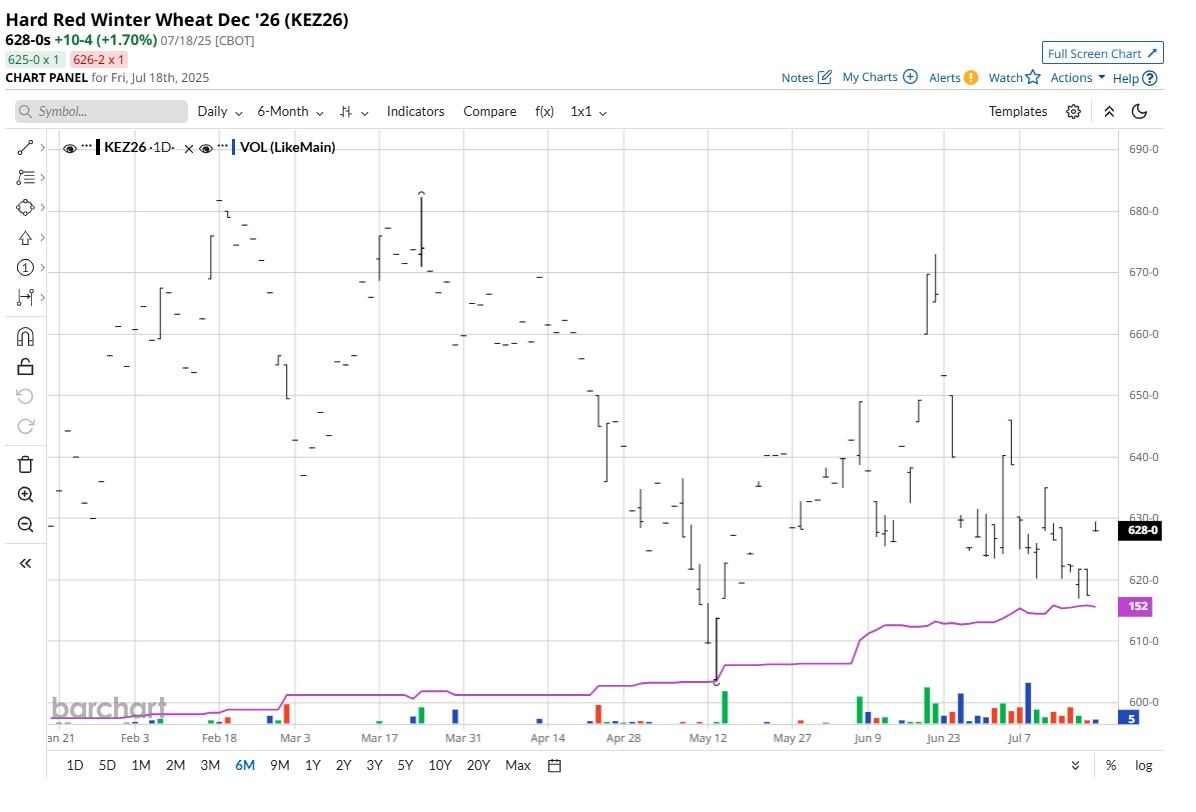
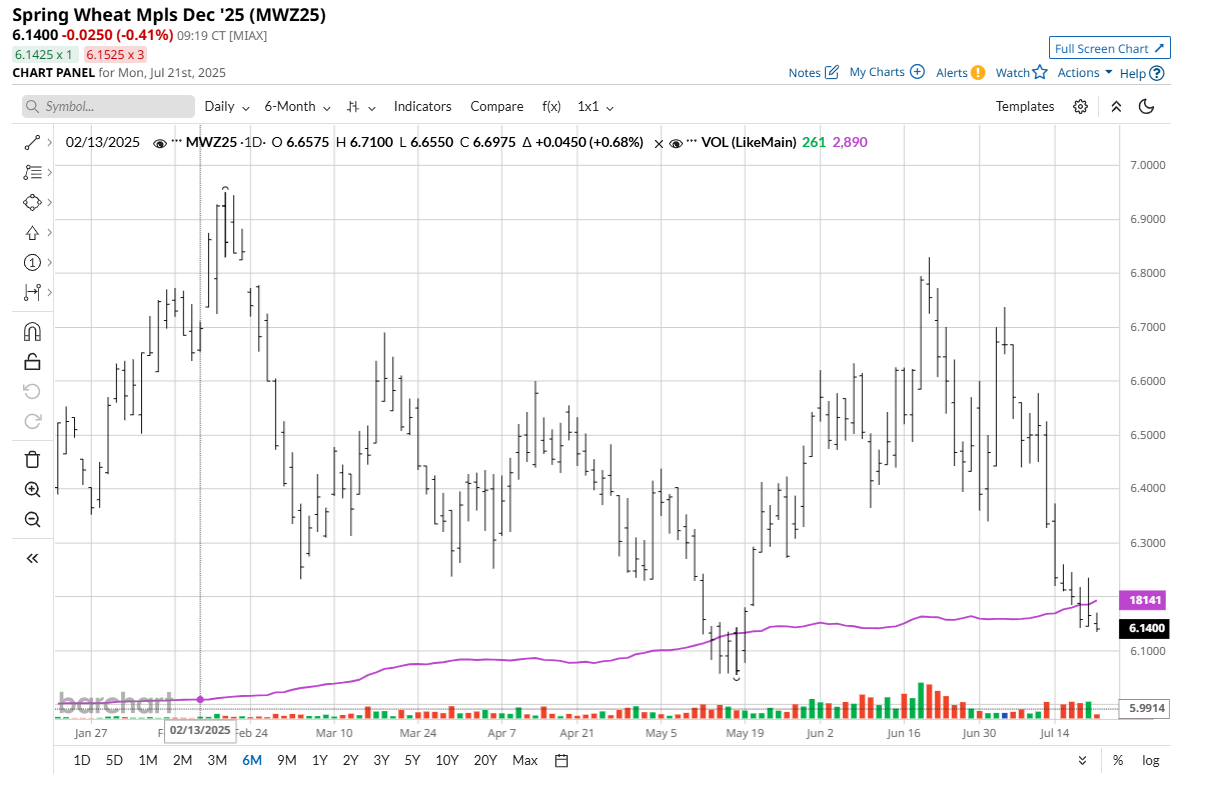
Weather conditions for the U.S. winter wheat crops are mostly favorable, including for harvesting of the winter wheat crop at present. Commercial hedge pressure from winter wheat harvesting may limit any further price advances in wheat futures.
Spring wheat in the U.S. northwest is experiencing some drought conditions. At present, 36% of the U.S. spring wheat producing region is seeing some level of drought.
On the demand side for U.S. wheat, the U.S. and Indonesia have agreed to a trade deal. Indonesia is the world’s largest importer of wheat.
On the date of publication, Jim Wyckoff did not have (either directly or indirectly) positions in any of the securities mentioned in this article. All information and data in this article is solely for informational purposes. For more information please view the Barchart Disclosure Policy here.